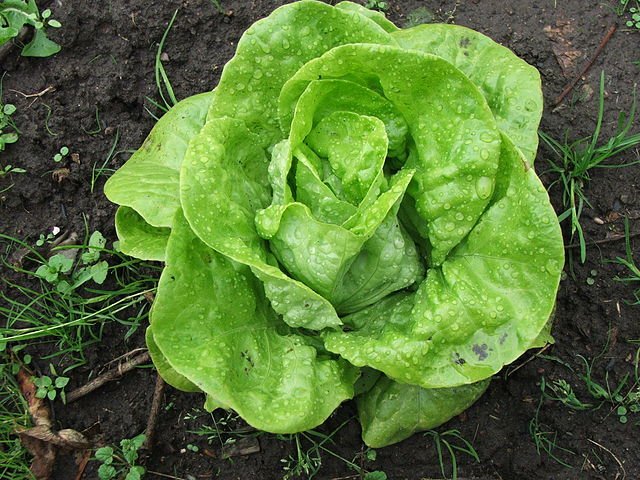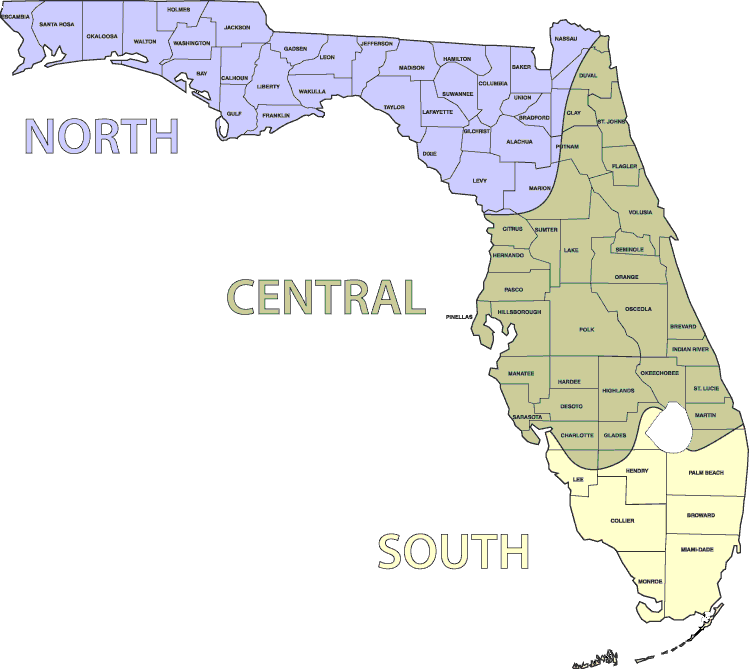Lettuce Varieties for Florida
Lettuce, with its crisp leaves and refreshing taste, brings a light and vibrant touch to any garden. This leafy green is a staple in salads and a variety of dishes, known for its wide range of textures and colors, from soft, buttery leaves to crisp, crunchy varieties. Its lush growth and appealing hues make lettuce an attractive addition to garden beds, containers, or even window boxes.
In Florida planting zone 9, lettuce grows particularly well during the cooler months. The plants form into neat, leafy rosettes, ready to be harvested leaf by leaf or as whole heads. Watching these fresh greens flourish is a satisfying experience, marking the success of your gardening efforts.
For those new to gardening, lettuce is an excellent choice. It is quick to grow and offers a continuous harvest, providing a steady supply of fresh, nutritious leaves. Whether you enjoy it in salads, sandwiches, or as a garnish, lettuce brings a crisp and healthy addition to your meals, making your gardening endeavors both rewarding and delicious.
I would give lettuce a 5 out of 5 on how easy it is to grow. It is very easy to cultivate and manage, making it perfect for beginners and experienced gardeners alike.
Buttercrunch
Heirloom

Description: Buttercrunch is a type of Bibb lettuce known for its soft, buttery leaves and compact head. It has a sweet, mild flavor and tender texture.
Growing Season: Fall and Winter
USDA Planting Zone: 2-11
Special Notes: Heat-tolerant and slow to bolt, making it ideal for warmer climates like Florida.
Romaine (Parris Island Cos)
Heirloom

Description: Parris Island Cos is a variety of Romaine lettuce that produces tall, upright heads with dark green, crisp leaves. It has a crunchy texture and a slightly sweet flavor.
Growing Season: Fall and Winter
USDA Planting Zone: 3-11
Special Notes: Tolerates heat better than other varieties, making it a good choice for extended growing seasons.
Leaf Lettuce (Black-Seeded Simpson)
Heirloom

Description: Black-Seeded Simpson is a popular leaf lettuce variety with light green, frilly leaves. It has a mild, slightly sweet flavor and a tender texture.
Growing Season: Fall and Winter
USDA Planting Zone: 2-11
Special Notes: Very heat-tolerant and quick-growing, allowing for multiple harvests throughout the season.
Red Leaf Lettuce (Red Sails)
Heirloom

Description: Red Sails is a red leaf lettuce variety with beautiful, ruffled leaves that are deep red at the tips and green at the base. It has a mild flavor and tender texture.
Growing Season: Fall and Winter
USDA Planting Zone: 2-11
Special Notes: Slow to bolt and adds a pop of color to salads and dishes.
Oakleaf Lettuce (Salad Bowl)
Heirloom

Description: Salad Bowl is an oakleaf lettuce variety with deeply lobed, light green leaves. It has a mild flavor and tender texture, making it perfect for salads.
Growing Season: Fall and Winter
USDA Planting Zone: 2-11
Special Notes: Heat-tolerant and resistant to bolting, allowing for an extended harvest period.
Florida Vegetable Planting Guide
This guide provides information on when to start seeds inside, direct seed, and transplant starter plants in the different regions of Florida.
North USDA Planting Zones: 8b-9a
Central USDA Planting Zones: 9b & some of 10a
South USDA Planting Zones: 10a-11b
Visit the U.S. National Arboretum for an Exact USDA Planting Zone Map.

| Lettuce | North Florida | Central Florida | South Florida |
|---|---|---|---|
| Start Seeds Inside | Jan-Feb & Aug-Sep | Aug-Sep | Aug-Sep |
| Direct Seed | Jan-Feb & Sep-Oct | Sep-Mar | Oct-Mar |
| Transplant Starter Plants | Oct-Mar | Oct-Mar | Oct-Mar |
Explanation:
Start Seeds Inside: Starting lettuce seeds indoors in late summer allows for a controlled environment to ensure good germination and strong seedlings ready for transplanting.
Direct Seed: Direct seeding lettuce during cooler months takes advantage of the ideal growing temperatures and avoids the heat stress that can lead to bolting.
Transplant Starter Plants: Transplanting lettuce starter plants provides a head start in the garden, allowing for quicker harvests and better utilization of garden space.
Weather: Leaf types grow well in Florida; grow crisphead type only in coolest months. Damaged by freezing temperatures. Warm temperatures cause bitterness. Sow seeds very shallow as they need light to germinate. Intercrop lettuce with long-season and/or taller vegetables.
________________________________________________________________________________________________________________________
Soil: Lettuce prefers well-drained, fertile soil with a pH between 6.0 and 6.8. Amend the soil with compost or well-rotted manure to improve fertility and structure.
Sun: Partial shade is beneficial during the hottest part of the day to prevent bolting. Use shade cloths or plant in an area that receives afternoon shade.
Watering: Keep the soil consistently moist but not waterlogged. Mulching helps retain soil moisture and regulate temperature. Water early in the morning to reduce evaporation.
Spacing: Plant lettuce seeds or transplants 8-12 inches apart in rows and space rows 18 inches apart. Proper spacing ensures adequate air circulation and room for growth.
Fertilization:
N-P-K Ratio: Lettuce benefits from a fertilizer with a higher nitrogen content to support leafy growth, such as 10-5-5 or 20-10-10.When to Add:
Before Planting: Apply the fertilizer to the soil before planting seeds or transplants to promote strong initial growth.
Mid-Growing Season: Reapply the fertilizer every 2-4 weeks during the growing season to support continued leafy growth.
Application Tips:
Follow the directions on the fertilizer package to avoid over-fertilization.
Apply the fertilizer evenly around the base of the plants and water thoroughly to help the nutrients reach the roots.
Additional Tips:
Lettuce grows best in well-drained soil rich in organic matter, so consider adding compost to improve soil fertility and structure.
Mulch around the plants to help retain moisture, suppress weeds, and regulate soil temperature.
Ensure that lettuce receives consistent moisture to prevent stress and promote tender, flavorful leaves.
Blog post on Natural Fertilizers
Harvesting: Lettuce is ready to harvest when the leaves reach a suitable size for consumption, usually about 6-8 inches long. For head lettuce, harvest when the heads are firm and well-formed, typically 60-80 days after planting. Loose-leaf varieties can be harvested as soon as the leaves are large enough to eat, by cutting outer leaves and allowing the inner ones to continue growing.
By selecting the right lettuce varieties and following these growing tips, you can achieve a successful and bountiful lettuce harvest even during the hot summer months in your Florida garden.
Pests and Diseases that affect Lettuce in Florida:
Aphids: Small insects that suck sap from the leaves and stems, causing curling and yellowing.
Slugs and Snails: Mollusks that feed on the leaves, causing holes and ragged edges.
Leaf Miners: Insects whose larvae burrow into the leaves, creating unsightly trails and damaging the plant.
Natural Pest Control
Downy Mildew: A fungal disease that causes yellowing leaves with a fuzzy, grayish growth on the underside.
Powdery Mildew: A fungal disease that causes a white, powdery coating on the leaves.
Lettuce Mosaic Virus: A viral disease that causes mottled leaves and stunted growth.
Companion Plants
Chives
Description: Chives are perennial herbs with long, thin, green leaves and a mild onion flavor.
Growing Season: Spring to fall
USDA Planting Zone: 3-9
Special Notes: Chives prefer full sun to partial shade and well-drained soil.
How it Helps: Chives help repel aphids and other pests with their strong scent. They also attract beneficial insects that help keep pest populations under control.
Garlic
Description: Garlic is a bulbous plant that grows underground, with long green shoots above ground.
Growing Season: Fall to early summer
USDA Planting Zone: 3-8
Special Notes: Known for its strong scent and taste, garlic also has natural pest-repelling properties.
How it Helps: Garlic helps to repel aphids, slugs, and snails due to its strong odor. It also has antifungal properties that can help reduce the incidence of downy mildew and powdery mildew.
Marigold
Description: Marigolds are bright, sunny flowers that come in a variety of colors including yellow, orange, and red.
Growing Season: Spring through fall
USDA Planting Zone: 2-11
Special Notes: Marigolds release chemicals in the soil that deter nematodes and other soil-borne pests.
How it Helps: Marigolds help repel aphids, slugs, and other pests. Their roots secrete a substance that helps prevent nematodes, protecting lettuce roots.
Radish
Description: Radishes are root vegetables with a spicy flavor, known for their rapid growth and crunchy texture.
Growing Season: Fall and spring
USDA Planting Zone: 2-10
Special Notes: Radishes can be used as trap crops to attract pests away from more valuable plants.
How it Helps: Radishes attract leaf miners and aphids, reducing the number of pests that attack lettuce. This helps to protect the lettuce from pest damage.
Nasturtium
Description: Nasturtiums are flowering plants with round leaves and vibrant flowers in shades of yellow, orange, and red.
Growing Season: Spring to fall
USDA Planting Zone: 4-8
Special Notes: Known for their ability to trap pests and attract beneficial insects.
How it Helps: Nasturtiums act as a trap crop, luring aphids and other pests away from lettuce. Their flowers also attract beneficial insects that prey on these pests.
These companion plants help protect lettuce from pests and diseases while also enhancing the overall health and productivity of the garden.
For lettuce, here are the vegetable plants that should not be planted nearby:
Broccoli - Competes for nutrients and can attract pests that affect lettuce.
Brussels Sprouts - Similar to broccoli, can compete for nutrients and attract pests.
Cauliflower - Competes for the same nutrients and can attract similar pests.
Cabbage - Competes for nutrients and can attract pests harmful to lettuce.
Fennel - Can inhibit the growth of lettuce.
